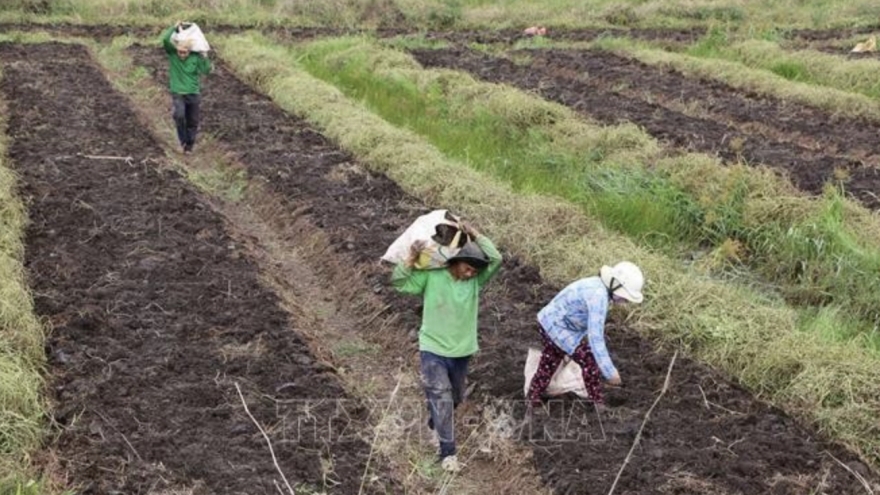Tag: Economic growth

Final sprint to propel economic growth this year
As 2024 draws to a close, Vietnam’s economy is nearing the finish line of its annual targets, and continued efforts are needed to secure the best possible outcomes.

Government requests solutions in place to boost economic growth for 2025
VOV.VN - Prime Minister Pham Minh Chinh has issued a directive outlining key measures to boost economic growth in 2025, with the aim of securing a GDP growth rate of over 8%.

Vietnam should tap domestic market for economic growth: insiders
Vietnam's domestic market still holds significant untapped potential, and stimulating domestic consumption is a vital strategy to drive economic growth in the near future, according to economic experts.

PM orders swift resolution of challenges for renewable energy projects
Prime Minister Pham Minh Chinh has laid stress on the need to complete the resolution of obstacles for renewable projects by February 2025 to prevent wastefulness, contributing to ensuring electricity for development.

PM orders development of modern railway systems in major cities
Prime Minister Pham Minh Chinh on December 5 laid stress on the development of modern railway systems in Hanoi and Ho Chi Minh City, saying it is a significant move to settle traffic congestion and environmental pollution while promoting economic growth in the two major cities.

PM urges faster legal reform to achieve double-digit economic growth
Prime Minister Pham Minh Chinh has requested continuing to review and find out shortcomings in legal documents and propose amendments and supplements, thus removing "bottlenecks" to achieve double-digit economic growth.

Real estate prices in Vietnam expand by 59% over 5 years
Vietnam's real estate price growth over the past five years has reached 59%, significantly higher than other countries such as the US (54%), Australia (49%), Japan (41%), and Singapore (37%), according to data from the Global Property Guide.

Domestic firms seize opportunities to join North-South high-speed railway project
A seminar to discuss opportunities and challenges for Vietnamese businesses in joining the North-South high-speed railway project was held in Hanoi on November 19, attracting the participation of representatives from the Ministry of Transport and businesses.

Vietnam and Chile to further deepen comprehensive partnership
VOV.VN - Vietnamese President Luong Cuong on November 8 began an official visit to Chile at the invitation of Chilean President Gabriel Boric Font, aiming to foster new momentum, deepen the comprehensive partnership between the two countries, and make it more effective and practical.

VNDirect projects Vietnamese economic growth to hit 6.9% this year
VOV.VN - VNDirect Securities Corporation has raised its forecast for Vietnam’s GDP growth this year to 6.9% from the previous projection of 6.7%, according to the group's latest report.









